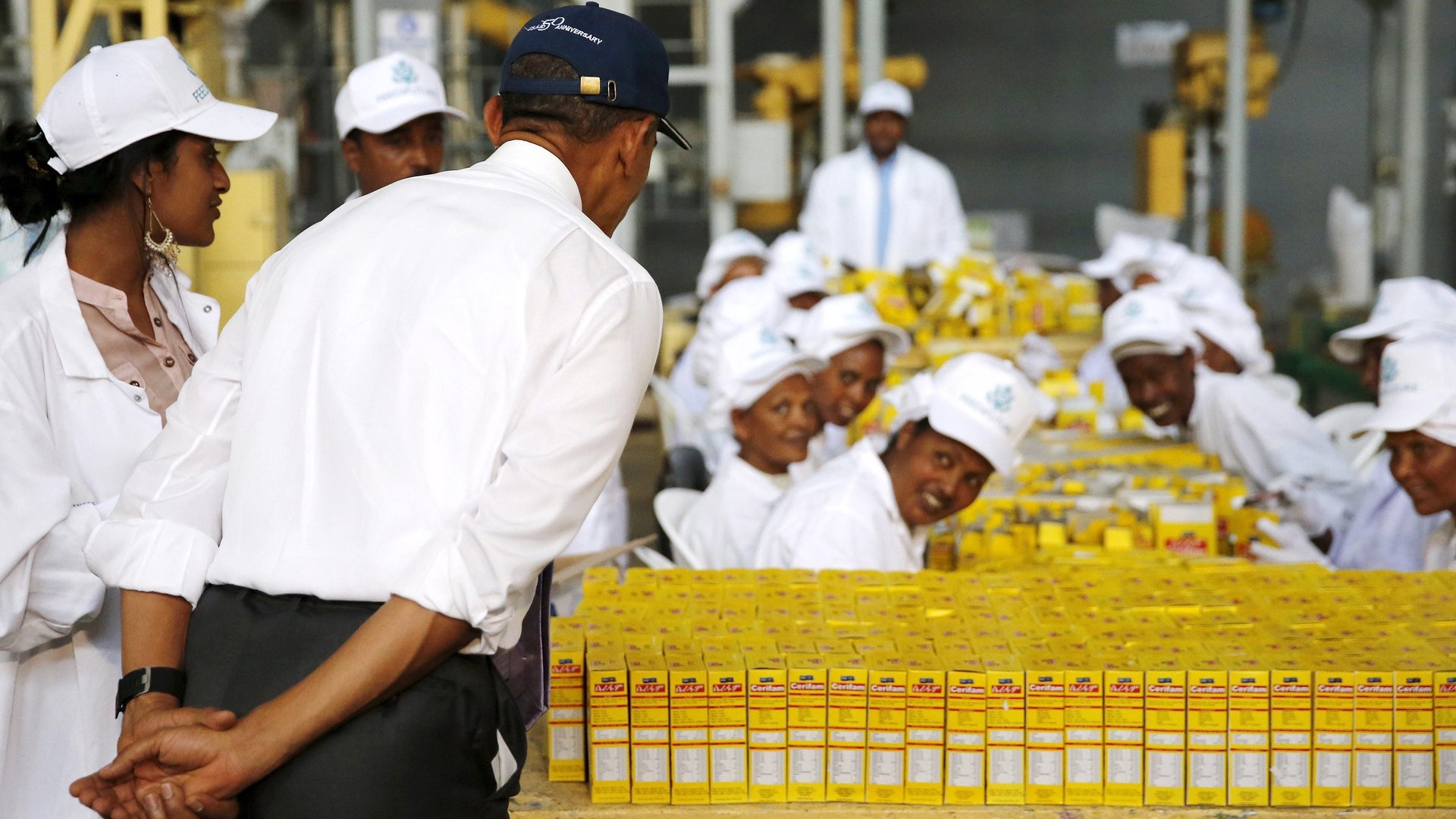Even Africa’s poorest countries are too expensive to be the world’s next manufacturing hub
Even though the global economy has evolved significantly in the last few decades away from the industrial revolution—which transformed many of the world’s advanced countries—there’s still much hope tied to the idea that manufacturing will play a key transformative role in developing countries in Africa today.


Even though the global economy has evolved significantly in the last few decades away from the industrial revolution—which transformed many of the world’s advanced countries—there’s still much hope tied to the idea that manufacturing will play a key transformative role in developing countries in Africa today.
Yet, it may be foolish to place too big a bet on manufacturing in Africa, according to a new research paper from US think tank, Center for Global Development.
The researchers used World Bank data to look at 5,500 firms in 29 countries. They compared labor and capital costs, and productivity and efficiency of manufacturing in sub Saharan Africa with similar countries outside Africa, in particular Bangladesh. They did not have good news for most of the region.
In a bid to find out if African countries can “break into global manufacturing in a substantial way”, the researchers found factories in Africa were almost always more expensive to start and run. Looking at overall costs, small African firms were 39% more expensive than comparative firms elsewhere while medium and large firms were around 50% more expensive.
Take a middle income African country like South Africa: Labor costs were described as “very high” despite unemployment levels as high as 30%. A mix of structural factors, restrictive labor laws, and high minimum wages mean the continent’s most advanced economy, is “not likely to emerge as a strong competitor in labor-intensive industry in the foreseeable future.”
Stable, coastal countries like Senegal, Kenya, and Tanzania seem like strong candidates for a role in global manufacturing, yet they’re still too expensive. The labor cost per Kenyan worker is $2,118 compared with Bangladesh, where it’s $835. The capital cost per Kenyan worker is nearly $10,000, but is less than $1,100 per worker in Bangladesh. As a middle income country, Kenya does have a higher GDP per capita ($1,116) versus Bangladesh ($853), but low income Senegal (GDP per capital $775) is still twice as expensive as Bangladesh in terms of labor and capital costs.
There is good news, and it’s mostly all in Ethiopia. The researchers believe Ethiopia, already leading the way as Africa’s 21st century center for manufacturing has the best likelihood of being the “New China” as labor costs rise in the “world’s factory” and social issues such as child labor arise in some other Asian countries. Fashion brands like H&M, Guess, and J. Crew are already finding potential in Ethiopia, one of the few African countries whose labor costs ($909) are close to Bangladesh.
The researchers are reluctant to speculate why African manufacturing costs are so high, but it isn’t difficult to imagine what some of the challenges would be. A lack of infrastructure such as transport networks and stable electricity in many poor African countries plus low levels of education will mean factory running costs and training the African worker are going to be more expensive than they need to be. This can get exacerbated by unhelpful regulation and poor policy.
That’s why the authors suggest “carefully designed industrial policy” to “possibly unleash the potential for manufacturing and rapid industrialization.”